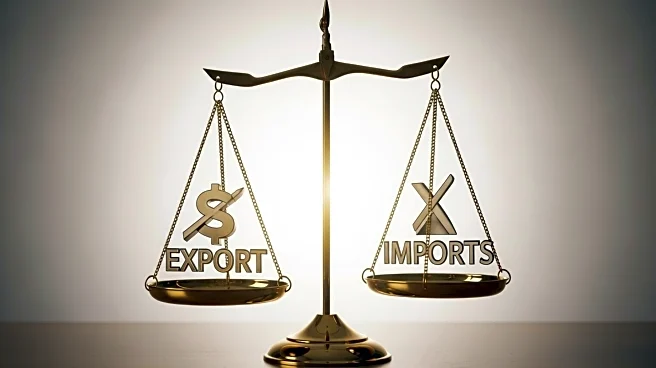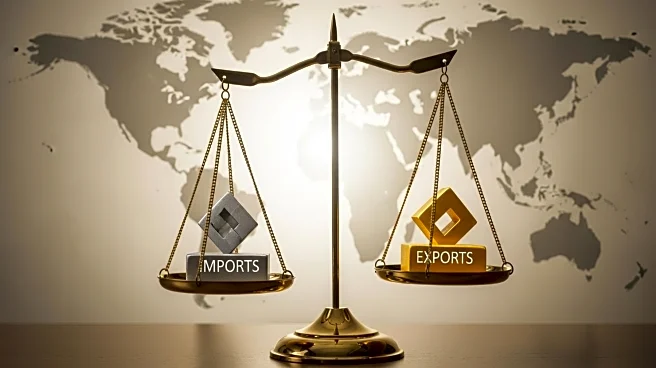What's Happening?
The U.S. current account deficit experienced a significant reduction in the second quarter, according to the Commerce Department's Bureau of Economic Analysis. The deficit decreased by a record $188.5 billion, or 42.9%, to $251.3 billion, marking the largest contraction on record. This decline was attributed to a decrease in imports, particularly in nonmonetary gold, consumer goods, and industrial supplies, including crude oil. The deficit now represents 3.3% of the gross domestic product, the smallest share since the third quarter of 2023. President Trump's tariffs have influenced the fluctuations in goods imports, impacting GDP growth in the first quarter and subsequently boosting growth in the April-June quarter.
Why It's Important?
The reduction in the current account deficit is a significant economic indicator, reflecting changes in trade dynamics and the impact of tariffs. A smaller deficit can suggest improved trade balance and economic health, potentially strengthening the U.S. dollar's position in the global monetary system. However, the unpredictability of trade policies under President Trump raises concerns about long-term economic stability. The decrease in imports and the narrowing goods trade deficit could influence future economic strategies and international trade relations.
What's Next?
The ongoing effects of tariffs and trade policies will continue to shape the U.S. economy. Stakeholders, including businesses and policymakers, will need to monitor these developments closely. Potential adjustments in trade agreements or tariff policies could further impact the current account balance and overall economic growth. The situation may also prompt discussions on the sustainability of current trade practices and their long-term implications for the U.S. economy.












